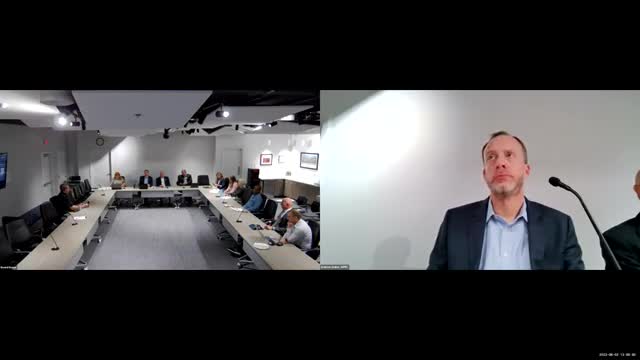Federal funds boost transportation projects amid recession fears
November 06, 2024 | Joint Policy Advisory Committee, Wasatch Front Regional Council, Wasatch County Commission and Boards, Wasatch County, Utah
This article was created by AI summarizing key points discussed. AI makes mistakes, so for full details and context, please refer to the video of the full meeting. Please report any errors so we can fix them. Report an error »

During a recent government meeting, officials discussed the current financial outlook and the implications of federal funding programs on local infrastructure projects. The conversation highlighted a cautious optimism regarding the state's financial health compared to three years ago, despite concerns about a potential recession that could impact sales tax revenues.
Ben, a representative from the Utah Department of Transportation (UDOT), presented a graphic comparing funding under the Infrastructure Investment and Jobs Act (IIJA) to previous federal authorizations. He noted a 14% increase in formula programs for UDOT, although inflation rates are currently exceeding this increase. UDOT is focusing on maintaining existing funding levels while also preparing for new programs, including a significant initiative for locally owned bridges that will require no local match funding.
The meeting also addressed the rollout of electric vehicle (EV) charging infrastructure, with UDOT preparing a plan to access approximately $5 million in federal funds for the first year. This funding is part of the National Electric Vehicle Infrastructure (NEVI) program, which aims to expand EV charging capabilities across the state.
Additionally, officials discussed various grant opportunities, including the RAISE grant and a new multimodal project discretionary grant that combines several funding streams. The importance of coordination among local entities was emphasized to avoid overlapping requests and to strengthen applications for discretionary grants, which are increasingly competitive.
Ryan Levitt, another participant, elaborated on the significance of congressionally directed spending, commonly known as earmarks. He explained that while these funds can support smaller projects, they typically require local cost-sharing and strong community backing to be successful. Levitt noted that Utah's congressional delegation has been active in submitting transportation-related projects for funding, with an expectation of continued opportunities in the future.
Overall, the meeting underscored the importance of strategic planning and collaboration among local governments and agencies to effectively leverage federal funding for infrastructure improvements in Utah.
Ben, a representative from the Utah Department of Transportation (UDOT), presented a graphic comparing funding under the Infrastructure Investment and Jobs Act (IIJA) to previous federal authorizations. He noted a 14% increase in formula programs for UDOT, although inflation rates are currently exceeding this increase. UDOT is focusing on maintaining existing funding levels while also preparing for new programs, including a significant initiative for locally owned bridges that will require no local match funding.
The meeting also addressed the rollout of electric vehicle (EV) charging infrastructure, with UDOT preparing a plan to access approximately $5 million in federal funds for the first year. This funding is part of the National Electric Vehicle Infrastructure (NEVI) program, which aims to expand EV charging capabilities across the state.
Additionally, officials discussed various grant opportunities, including the RAISE grant and a new multimodal project discretionary grant that combines several funding streams. The importance of coordination among local entities was emphasized to avoid overlapping requests and to strengthen applications for discretionary grants, which are increasingly competitive.
Ryan Levitt, another participant, elaborated on the significance of congressionally directed spending, commonly known as earmarks. He explained that while these funds can support smaller projects, they typically require local cost-sharing and strong community backing to be successful. Levitt noted that Utah's congressional delegation has been active in submitting transportation-related projects for funding, with an expectation of continued opportunities in the future.
Overall, the meeting underscored the importance of strategic planning and collaboration among local governments and agencies to effectively leverage federal funding for infrastructure improvements in Utah.
View full meeting
This article is based on a recent meeting—watch the full video and explore the complete transcript for deeper insights into the discussion.
View full meeting

